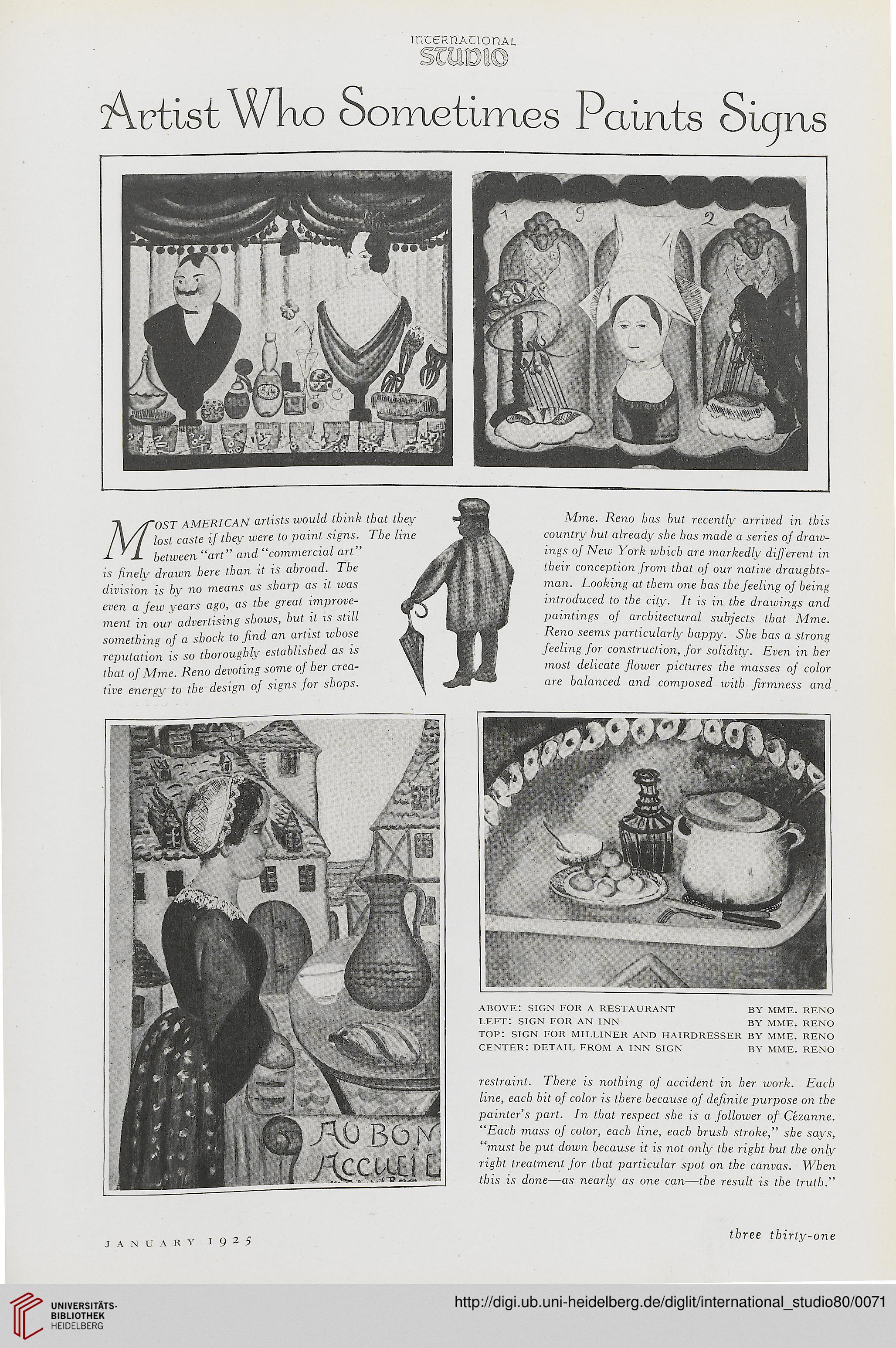inceRnAcionAi.
Artist Wko Sometimes Paints Signs
'OST AMERICAN artists would think that they hHI Mme. Reno bos but recently arrived in this
lost caste if tbey were to paint signs. The line JBs\ country but already she has made a series of draw-
between "art" and "commercial art" jj| I C \ ings of New ) ork which are markedly different in
is finely drawn here than it is abroad. The jfjff ! || conception from that of our native draughts-
division is by no means as sharp as it was mrS* 4''ftf L""kinX «''hem one has the feeling of being
even a few years ago, as the great improve- introduced to the city. It is in the drawings and
menl in our advertising shows, hut it is still TO MJMJ| paintings of architectural subjects that Mme.
something of a shock to find an artist whose 111 Reno seems particularly happy. She has a strong
reputation is so thoroughly established as is VU I ■ feeling for construction, for solidity. Even in her
that of Mme. Reno devoting some of her crea- \ \ most delicate flower pictures the masses of color
live energy to the design of signs for shops. ^ are balanced and composed with firmness and
j^J BO N
7tccad L
above: sign for a restaurant by mme. reno
left: sign for an inn by mme. reno
top: sign for milliner and hairdresser by mme. reno
center: detail from a inn sign by mme. reno
restraint. There is nothing of accident in her work. Each
line, each bit of color is there because of definite purpose on the
painter s part. In that respect she is a follower of Ce/.unne.
"Each mass of color, each line, each brush stroke," she says,
"must be put down because it is not only the right but the only
right treatment for that particular spot on the canvas. When
this is done—as nearly as one can—the result is the truth."
january 1925
three thirty-one
Artist Wko Sometimes Paints Signs
'OST AMERICAN artists would think that they hHI Mme. Reno bos but recently arrived in this
lost caste if tbey were to paint signs. The line JBs\ country but already she has made a series of draw-
between "art" and "commercial art" jj| I C \ ings of New ) ork which are markedly different in
is finely drawn here than it is abroad. The jfjff ! || conception from that of our native draughts-
division is by no means as sharp as it was mrS* 4''ftf L""kinX «''hem one has the feeling of being
even a few years ago, as the great improve- introduced to the city. It is in the drawings and
menl in our advertising shows, hut it is still TO MJMJ| paintings of architectural subjects that Mme.
something of a shock to find an artist whose 111 Reno seems particularly happy. She has a strong
reputation is so thoroughly established as is VU I ■ feeling for construction, for solidity. Even in her
that of Mme. Reno devoting some of her crea- \ \ most delicate flower pictures the masses of color
live energy to the design of signs for shops. ^ are balanced and composed with firmness and
j^J BO N
7tccad L
above: sign for a restaurant by mme. reno
left: sign for an inn by mme. reno
top: sign for milliner and hairdresser by mme. reno
center: detail from a inn sign by mme. reno
restraint. There is nothing of accident in her work. Each
line, each bit of color is there because of definite purpose on the
painter s part. In that respect she is a follower of Ce/.unne.
"Each mass of color, each line, each brush stroke," she says,
"must be put down because it is not only the right but the only
right treatment for that particular spot on the canvas. When
this is done—as nearly as one can—the result is the truth."
january 1925
three thirty-one




